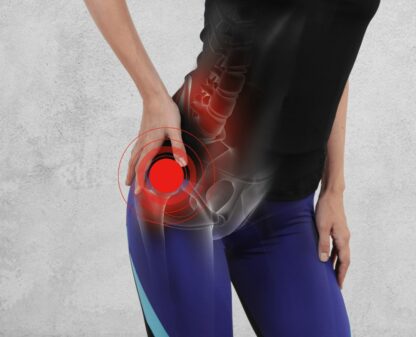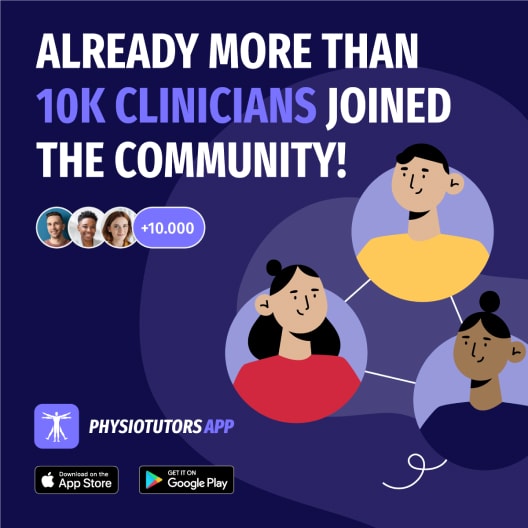Arthroscopic hip surgery versus physiotherapy for femoroacetabular impingement
No difference in hip cartilage metabolism between arthroscopy and physiotherapy at 12 months.
Trend towards significant better hip cartilage metabolism in the physiotherapy group.
Due to underpowered analyses, the possibility that the lack of statistical significance is caused by a type 2 error exists.
Introduction
Femoroacetabular impingement, which is a motion-related disorder of the hip with a triad of symptoms, clinical signs, and imaging findings, is a condition frequently affecting active individuals. It is believed it can be a predisposing factor for future hip osteoarthritis due to the repetitive abutment of the proximal femur against the acetabular rim, applying shear forces to the acetabular labrum and/or cartilage. Treatment approaches can be conservative or surgical and these have been compared frequently, but the primary outcome for most of these RCTs was self-reported and possibly influenced by placebo effects. To overcome this, this trial aimed to compare arthroscopic hip surgery to physiotherapy for femoroacetabular impingement with an objective outcome measure: hip cartilage metabolism.
Methods
An assessor and statistician blinded; multicenter randomized controlled trial was conducted to compare changes in hip cartilage metabolism between a surgical arthroscopic intervention and physiotherapy for femoroacetabular impingement. The primary outcome was hip cartilage metabolism, measured by delayed gadolinium-enhanced MRI of cartilage (dGEMRIC) between baseline and 12 months of follow-up.
Surgery consisted of treating shape abnormalities and consequent labral and cartilage pathologies in a standardized way. Bony resection at the acetabular rim and the head-neck junction were assessed by intraoperative image intensifier radiograph and/or satisfactory impingement-free range of movement of the hip.
In the physiotherapy group participants received a multi-faceted approach, beginning with an assessment of the patient’s pain, function, and hip range of motion. Further, the program included (i) an individualized and progressive exercise program supervised by a physiotherapist, (ii) education about the condition and its management, and (iii) advice regarding pain relief which could include referral to the participant’s General Practitioner, or if necessary, referral for an ultrasound-guided intra-articular steroid injection to enable participants to engage in the exercise program where the pain would otherwise prevent them from doing so.
Next to the primary outcome (the change in the glycosaminoglycan (GAG) content of the hip joint cartilage), other secondary outcomes were hip joint structural change measured by the semi-quantitative whole hip OA MRI score (HOAMS), hip-related quality of life measured by the international Hip Outcome Tool-33 (iHOT-33), the Hip disability and Osteoarthritis Outcome Score (HOOS), the 12-Item Short Form Health Survey (SF-12), patient-perceived overall improvement using a Global Improvement Scale (GIS), and patient satisfaction measured on a five-point Likert scale.
Results
The trial included a total of 99 patients of which 49 were allocated to arthroscopy and 50 were allocated to physiotherapy. Patients were on average 33 years and had femoroacetabular complaints for 20 months. Cam was the most common type of hip morphology (63%). About one in five subjects had bilateral symptoms.
After randomization, subjects in the hip arthroscopy group received treatment after 12.5 (SD (8.1) weeks, while physiotherapy was initiated earlier at 4.7 (SD 2.3) weeks on average. Three patients of the physiotherapy program crossed over to the surgery group. At 12 months, the adjusted group difference in hip cartilage metabolism favored physiotherapy but this effect was not statistically significant.

Concerning the secondary outcome measures, the hip-related quality of life showed improvements in both groups whereas the adjusted group difference on the iHOT-33 showed a greater statistically and clinically important improvement of 14.2 units in the arthroscopy group. Similar improvements in the quality of life (EQ-5D-5L), HOOS pain, and symptoms were seen in the arthroscopy group. The HOAMS score showed worsening cartilage and labrum scores in the arthroscopy group, but this can be explained by techniques used during surgery (acetabular chondroplasty, microfractures, chondral repair, separating chondrolabral adhesions and removal of scar tissue) or by a transient inflammatory state that may adversely affect cartilage biochemical content. There was an improvement in regions affected by osteophytes. This totally makes sense as these were removed by the surgeon during hip arthroscopy.
Talk nerdy to me
Good aspects of this study include the intention-to-treat analysis (which investigates all subjects according to their original randomization to avoid potential bias due to the exclusion of patients) and the fact that analyses were adjusted for baseline dGEMRIC score and relevant baseline characteristics. The authors also performed per-protocol analyses, which is a bit trickier as it could introduce bias in the results by comparing only those patients who completed the treatment originally allocated. However, these per-protocol analyses were pre-specified and used to compare whether there were differences when analyses looked only at fully compliant patients. The per-protocol analyses showed consistent outcomes compared to intention-to-treat analyses. Subgroup analyses did not demonstrate significant differences between both treatment groups, except for subjects with higher median baseline dGEMRIC index scores (better hip cartilage metabolism) demonstrating a significant between-group difference in change of −110.7ms, favoring physiotherapy.
A big question mark can be placed on the failure to achieve the required sample size. Considering drop-out and cross-over of subjects, the sample size calculation required 140 participants to be included. Yet, the authors only succeeded in including 99 subjects. This was, the authors explained, due to a change in funding for hip arthroscopy by the Australian government.
Questions and thoughts
The trial failed to include the a priori-defined sample size and the baseline standard deviation of the primary outcome measure was greater than that used in the sample size calculation. This could have introduced heterogeneity which probably further underpowered the ability to detect a significant difference in the analysis of the primary outcome. This raises the chance that the lack of statistical significance is a type 2 error that falsely assumes the null hypothesis is correct. Therefore, uncertainty about the primary outcome remains, as we cannot confidently say whether the trend towards significance for physiotherapy improving hip cartilage metabolism could have been a true effect when the desired sample size would have been achieved. Furthermore, many secondary outcomes were investigated, increasing the risk of finding false negative and false positive findings.
Take home messages
No differences in hip cartilage metabolism were seen between arthroscopy and physiotherapy at 12 months in patients with FAI. A trend towards statistical significance can be observed for physiotherapy for femoroacetabular impingement. Yet for the primary outcome measure (hip cartilage metabolism), the fact that sample size requirements were not met, the lack of statistical significance can reflect a type 2 error, meaning that due to the underpowered analysis the power to reject the null hypothesis was lacking. Exercise may thus have had positive effects on the glycosaminoglycan content in the physiotherapy group.
Physiotherapy was initiated earlier than surgery, probably because it is more easily accessible and requires less waiting time. Therefore, we recommend initiating physiotherapy before sending patients for more invasive treatments, given that this trial could not demonstrate superior effects on the primary outcome measure after hip arthroscopy. As physiotherapy came along with only minor side-effects (muscle soreness) we can be confident that it is well tolerated by most patients. In contrast, after arthroscopy fewer patients complained of side effects (33% in the arthroscopy group versus 53% in the physiotherapy group). Reported side-effects in the arthroscopy included numbness in the groin, leg, or foot, and problems arising from the intake of pain medication which, compared to muscle soreness, is more serious anyway.
Reference
LEVEL UP YOUR DIFFERENTIAL DIAGNOSIS IN RUNNING RELATED HIP PAIN - FOR FREE!
Don’t run the risk of missing out on potential red flags or ending up treating runners based on a wrong diagnosis! This webinar will prevent you to commit the same mistakes many therapists fall victim to!



